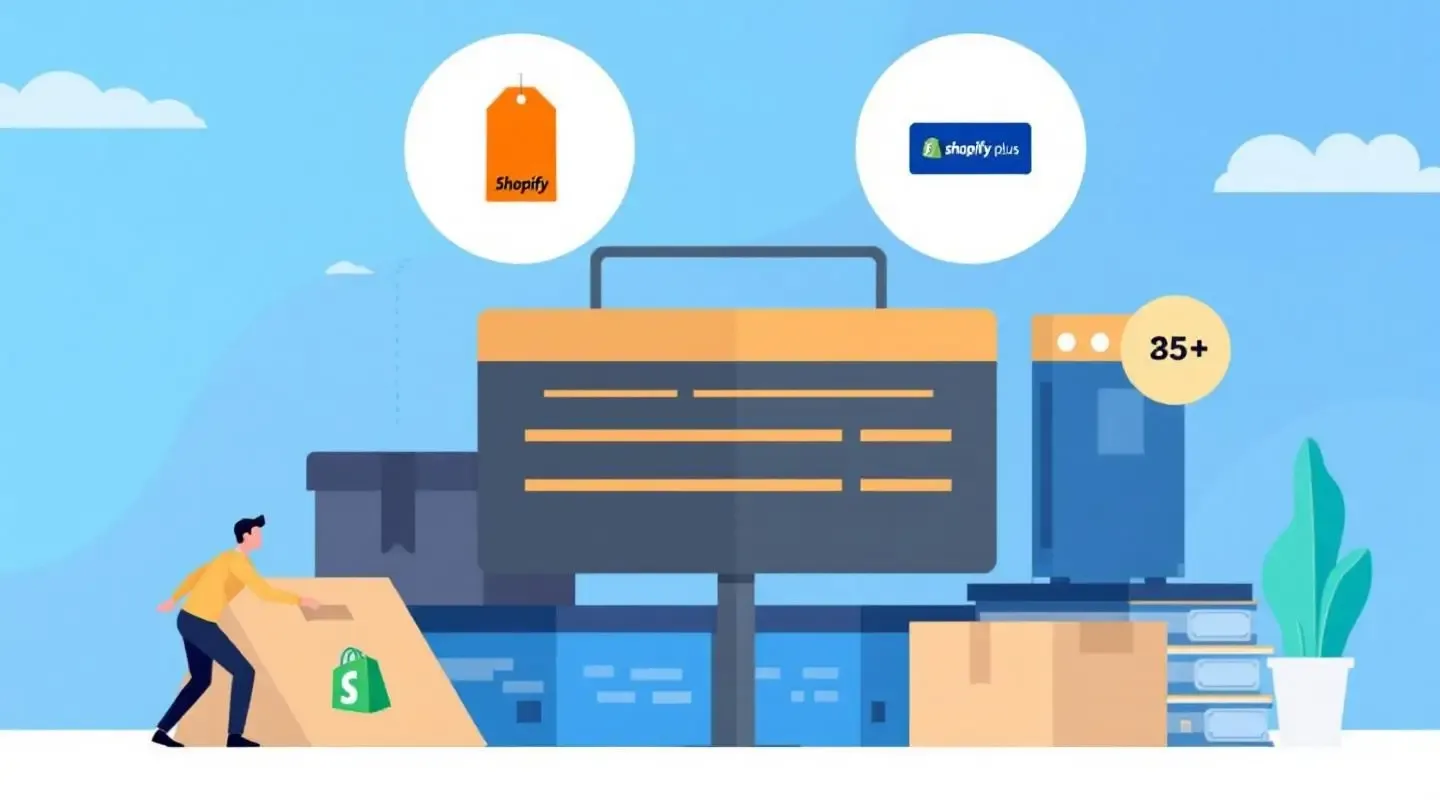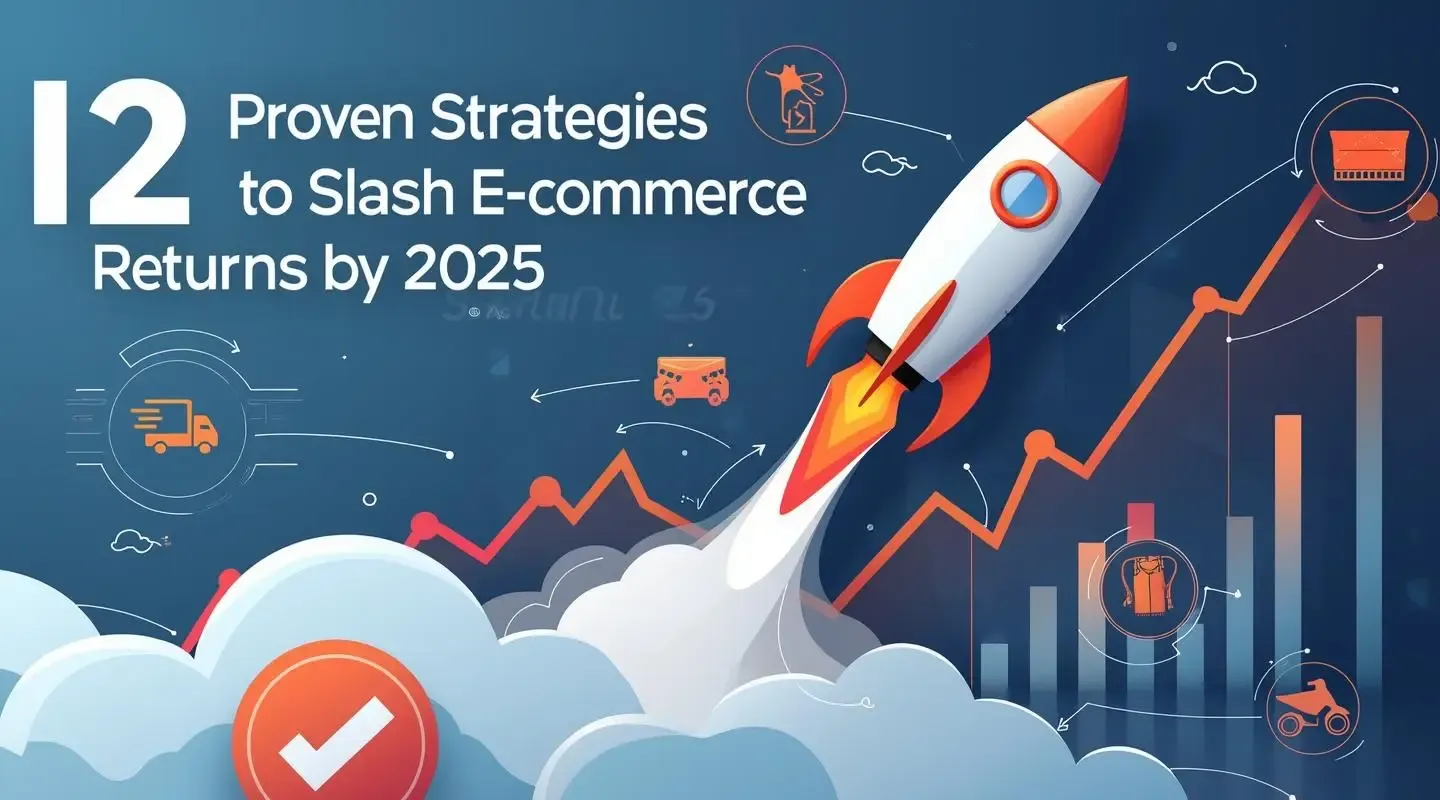The Future of eCommerce Returns: 5 Trends That Will Transform Your Business by 2026
The eCommerce returns landscape is on the brink of a revolutionary transformation. With global returns projected to reach $890 billion in 2024 and continuing to grow, the traditional "buy-return-refund" model is becoming unsustainable for both businesses and the planet. Forward-thinking retailers are already implementing next-generation return strategies that will define competitive advantage in the coming years.
This isn't just about managing returns more efficiently—it's about fundamentally reimagining how products flow through the economy. The businesses that embrace these emerging trends will not only reduce costs and improve customer satisfaction but also position themselves as leaders in the sustainable commerce revolution.
Here are the five transformative trends that will reshape return management by 2026, and how you can prepare your business for this new reality.
Trend #1: AI-Powered Return Prediction and Prevention
Artificial intelligence is moving beyond simple automation to become a predictive powerhouse that can prevent returns before they happen. By 2026, AI-driven return prediction will be as fundamental to eCommerce as inventory management is today.
The Current State of AI in Returns
Today's AI applications in return management are primarily reactive—processing return requests, routing products, and analyzing return reasons after the fact. But the next generation of AI systems will be proactive, using machine learning to identify potential returns at the point of purchase and intervening to prevent them.
Current AI Applications:
- Automated return request processing
- Intelligent routing of returned products
- Basic return reason analysis
- Chatbot customer service for return inquiries
Next-Generation AI Capabilities:
- Real-time return risk assessment during checkout
- Personalized product recommendations based on return probability
- Dynamic sizing suggestions using body measurement data
- Predictive quality control alerts for high-return products
How AI Return Prediction Works
Advanced AI systems analyze hundreds of data points to predict return likelihood:
Customer Behavior Patterns:
- Historical return rates by customer segment
- Purchase timing and frequency patterns
- Product browsing behavior before purchase
- Customer service interaction history
Product-Specific Factors:
- Size and fit data from previous customers
- Quality issues reported in reviews
- Seasonal return patterns
- Manufacturing batch information
Contextual Variables:
- Weather conditions affecting product suitability
- Local events influencing purchase decisions
- Economic factors affecting buyer behavior
- Competitive pricing and availability
Real-World Implementation Examples
Fashion Retailer Case Study:
A major online fashion retailer implemented AI return prediction and achieved remarkable results:
- 35% reduction in return rates for predicted high-risk orders
- $2.3 million annual savings in return processing costs
- 18% increase in customer satisfaction scores
- 22% improvement in inventory turnover
The system works by analyzing customer measurements, style preferences, and historical return data to suggest the optimal size and style for each customer. When the AI predicts a high return probability, it triggers interventions like additional product information, alternative suggestions, or even personalized video consultations.
Electronics Retailer Implementation:
An electronics retailer uses AI to predict returns based on customer technical expertise and product complexity:
- Novice users purchasing advanced products receive additional setup support
- Complex products are bundled with installation services for high-risk customers
- Personalized tutorials are automatically sent based on predicted usage challenges
The ROI of AI Return Prevention
The financial impact of AI-powered return prevention is substantial:
Direct Cost Savings:
- $15-30 per prevented return in processing costs
- 60-80% reduction in customer service inquiries
- 25-40% decrease in reverse logistics expenses
- 15-25% improvement in inventory efficiency
Revenue Protection:
- Higher customer lifetime value through improved satisfaction
- Increased conversion rates through better product matching
- Reduced markdowns on returned merchandise
- Improved cash flow from fewer refunds
Implementation Roadmap for 2025-2026
Phase 1: Data Foundation (Q1-Q2 2025)
- Implement comprehensive data collection across all customer touchpoints
- Integrate return data with customer behavior analytics
- Establish baseline metrics for return prediction accuracy
Phase 2: AI Model Development (Q3-Q4 2025)
- Deploy machine learning models for return risk assessment
- Implement real-time prediction capabilities at checkout
- Begin A/B testing intervention strategies
Phase 3: Advanced Optimization (Q1-Q2 2026)
- Launch personalized return prevention campaigns
- Implement dynamic pricing based on return risk
- Deploy autonomous decision-making for high-confidence predictions
Trend #2: Sustainability as Competitive Advantage
Environmental consciousness is rapidly shifting from a "nice-to-have" to a business imperative. By 2026, sustainable return practices will be a primary differentiator in customer acquisition and retention, driven by both consumer demand and regulatory requirements.
The Sustainability Imperative
The environmental impact of eCommerce returns is staggering and growing:
Current Environmental Costs:
- 16 million metric tons of CO₂ emissions annually from returns in the U.S.
- 5.8 billion pounds of returned goods end up in landfills each year
- 2.6 million tons of packaging waste from return shipments
- $890 billion in global returns, much of which becomes waste
Consumer Demand for Sustainability:
According to DHL's 2025 Sustainability Report:
- 70% of global shoppers say sustainability is important when buying online
- 55% believe sustainability will become more important by 2030
- 58% would use a retailer's recycling or buy-back program
- 47% would only buy from retailers using sustainable logistics providers
The Circular Economy Revolution
The linear "take-make-dispose" model is giving way to circular systems that keep products and materials in use for as long as possible. This transformation is creating new business models and revenue streams.
Traditional Linear Model:
- Customer returns product
- Product goes to warehouse
- Product is discarded or sold at deep discount
- New product is manufactured to replace inventory
Circular Return Model:
- Customer returns product
- Product is assessed for reuse potential
- Product is refurbished, resold, or recycled
- Materials re-enter the supply chain
- Waste is minimized, value is maximized
Circular Return Strategies That Drive ROI
Refurbishment and Resale Programs:
- Asset Recovery: Components from damaged items are reused or sold for parts
- Secondary Markets: Refurbished products create new revenue streams
- Reduced Write-offs: Items are repaired rather than marked as losses
- Brand Differentiation: Sustainability initiatives build customer loyalty
Case Study: Electronics Manufacturer
A major electronics brand implemented a comprehensive circular returns program:
- $12 million annual revenue from refurbished product sales
- 68% reduction in landfill waste
- 45% decrease in raw material costs
- 23% improvement in brand perception scores
Donation and Recycling Partnerships:
- Tax Benefits: Donations provide tax deductions while supporting communities
- Material Recovery: Recycling programs reclaim valuable materials
- Brand Building: Partnerships with nonprofits enhance corporate reputation
- Regulatory Compliance: Programs help meet extended producer responsibility requirements
Regulatory Landscape and Compliance
Governments worldwide are implementing Extended Producer Responsibility (EPR) laws that make manufacturers responsible for the entire lifecycle of their products:
Current and Upcoming Regulations:
- France: EPR laws for textiles and electronics with significant penalties for non-compliance
- Germany: Packaging laws requiring take-back programs for online retailers
- Canada: Federal plastic waste regulations affecting eCommerce packaging
- EU: Proposed "Right to Repair" legislation extending product lifecycles
Compliance Benefits:
- Avoided Penalties: Proactive compliance prevents costly fines
- Market Access: Compliance enables expansion into regulated markets
- Competitive Advantage: Early adoption creates barriers for competitors
- Investor Appeal: ESG compliance attracts sustainable investment
Technology Enabling Sustainable Returns
AI-Powered Sustainability Optimization:
- Route Optimization: AI minimizes transportation emissions for return pickups
- Material Identification: Computer vision identifies recyclable components
- Condition Assessment: Automated systems determine refurbishment potential
- Impact Tracking: Real-time monitoring of environmental benefits
Blockchain for Transparency:
- Supply Chain Tracking: Complete product lifecycle visibility
- Authenticity Verification: Prevents counterfeit products in circular systems
- Impact Reporting: Immutable records of environmental benefits
- Stakeholder Trust: Transparent reporting builds consumer confidence
Implementation Strategy for Sustainable Returns
Assessment Phase:
- Audit current return processes for environmental impact
- Identify opportunities for waste reduction and value recovery
- Evaluate regulatory requirements in target markets
- Calculate potential ROI from sustainable initiatives
Pilot Programs:
- Launch small-scale refurbishment programs
- Test donation partnerships with local nonprofits
- Implement basic recycling for high-volume returns
- Measure environmental and financial impact
Scale and Optimize:
- Expand successful programs across all product categories
- Integrate sustainability metrics into business reporting
- Develop customer-facing sustainability communications
- Pursue third-party sustainability certifications
Trend #3: Hyper-Personalized Return Experiences
The one-size-fits-all approach to return policies is becoming obsolete. By 2026, successful retailers will offer personalized return experiences that adapt to individual customer behavior, purchase history, and loyalty status.
The Personalization Revolution
Modern consumers expect personalized experiences across all touchpoints, and returns are no exception. Advanced analytics and AI are enabling retailers to create return policies that are as unique as each customer.
Traditional Return Policy:
- Fixed return window (e.g., 30 days for all customers)
- Standard refund process regardless of customer value
- One-size-fits-all shipping and handling procedures
- Generic communication and support
Hyper-Personalized Return Experience:
- Dynamic return windows based on customer loyalty and purchase history
- Customized refund options (store credit, exchange, instant refund)
- Personalized return shipping options and costs
- Tailored communication and proactive support
Customer Segmentation for Return Personalization
VIP Customers (Top 10% by lifetime value):
- Extended return windows: 90-120 days vs. standard 30 days
- Free return shipping: All returns at no cost to customer
- Instant refunds: Immediate credit before item is received
- White-glove service: Personal return coordinators and expedited processing
Loyal Customers (Regular purchasers with low return rates):
- Flexible return windows: 60 days with possible extensions
- Discounted return shipping: Reduced costs for return labels
- Exchange priority: Fast-track exchanges over refunds
- Bonus incentives: Store credit bonuses for choosing exchanges
New Customers (Building relationship):
- Standard return window: 30 days with clear communication
- Educational support: Detailed return process guidance
- Retention incentives: Discounts on future purchases instead of refunds
- Feedback collection: Surveys to understand return reasons
High-Risk Customers (Frequent returners or suspected fraud):
- Shortened return windows: 14-21 days for returns
- Return fees: Charges for excessive returns
- Enhanced verification: Additional authentication requirements
- Account monitoring: Automated fraud detection and prevention
Dynamic Return Policy Engines
Advanced retailers are implementing dynamic systems that adjust return policies in real-time based on multiple factors:
Customer-Specific Factors:
- Purchase history and return patterns
- Customer lifetime value and profitability
- Loyalty program status and engagement
- Payment method and fraud risk assessment
Product-Specific Factors:
- Product category and return rates
- Seasonal demand and inventory levels
- Product condition and resale potential
- Supplier agreements and warranty terms
Business Context Factors:
- Current inventory levels and demand
- Seasonal sales patterns and promotions
- Competitive landscape and market conditions
- Financial targets and cash flow requirements
Technology Infrastructure for Personalization
Real-Time Decision Engines:
Modern return management systems use AI to make instant decisions about return policies:
Customer Profile + Product Data + Business Rules = Personalized Return PolicyExample Decision Tree:
- Customer Analysis: VIP status, 2% return rate, $5,000 lifetime value
- Product Assessment: High-demand item, 15% category return rate, good resale potential
- Business Context: Low inventory, peak season, strong cash flow
- Result: 90-day return window, free shipping, instant refund option
Integration Requirements:
- Customer Data Platform: Unified view of customer interactions
- Inventory Management System: Real-time stock levels and demand forecasting
- Fraud Detection: Risk assessment and prevention tools
- Communication Platform: Personalized messaging and notifications
Measuring Personalization Success
Customer Experience Metrics:
- Net Promoter Score (NPS): Improvement in customer advocacy
- Customer Satisfaction (CSAT): Return experience ratings
- Customer Effort Score (CES): Ease of return process
- Retention Rate: Impact on customer loyalty
Business Performance Metrics:
- Return Rate by Segment: Effectiveness of personalized policies
- Average Return Value: Impact on return merchandise value
- Processing Costs: Efficiency gains from personalization
- Revenue Recovery: Success in converting returns to exchanges
Implementation Best Practices
Start with High-Value Segments:
- Focus initial personalization efforts on VIP customers
- Measure impact before expanding to other segments
- Use A/B testing to optimize personalization rules
Maintain Policy Transparency:
- Clearly communicate personalized benefits to customers
- Ensure fair treatment across all customer segments
- Provide easy access to return policy information
Continuous Optimization:
- Regularly review and update personalization algorithms
- Monitor for unintended consequences or bias
- Gather customer feedback on personalized experiences
Trend #4: Blockchain and Return Transparency
Blockchain technology is emerging as a game-changer for return management, providing unprecedented transparency, fraud prevention, and supply chain visibility. By 2026, blockchain-based return systems will become increasingly common, especially for high-value goods and complex supply chains.
Trend #5: End-to-End Automation and Robotics
Conclusion: Embracing the Future of Returns
The future of eCommerce returns is intelligent, sustainable, personalized, transparent, and highly automated. Retailers who proactively embrace these trends will not only navigate the challenges of a growing returns market but also unlock new opportunities for growth, customer loyalty, and operational excellence. The time to prepare for this transformation is now.




